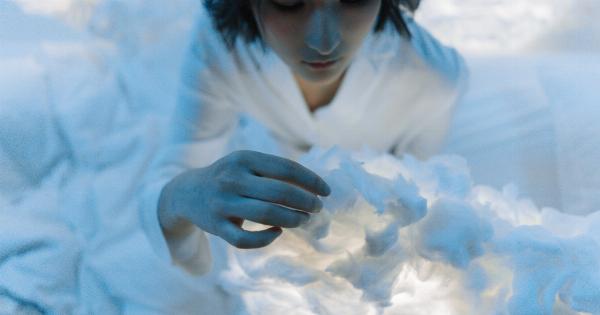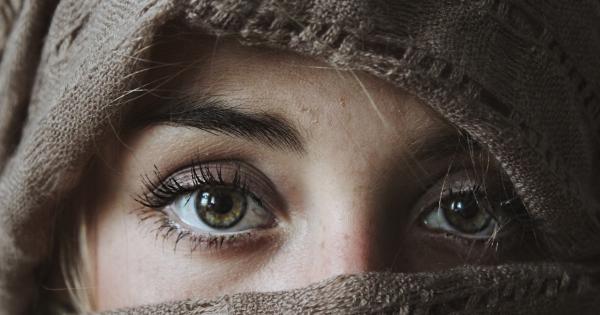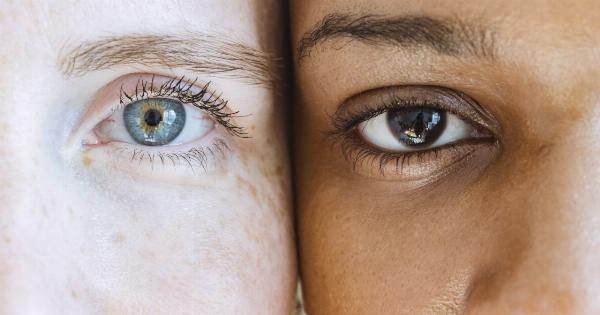Wearing contact lenses offers a convenient and comfortable vision correction option for millions of people around the world. However, many individuals are not aware of the potential risks associated with wearing contact lenses while sleeping.
While it may seem harmless to keep your contact lenses in overnight, it can actually pose several threats to your eye health. In this article, we will explore the dangers of sleeping with contact lenses and provide you with the information you need to keep your eyes safe.
The Importance of Proper Contact Lens Care
Before delving into the risks associated with sleeping in contact lenses, it is important to understand the basics of proper contact lens care.
Contact lenses require regular cleaning and disinfecting to remove dirt, debris, and bacteria that can accumulate on the surface. By practicing good hygiene, you can minimize the chances of eye infections and other complications.
Reduced Oxygen Supply
One of the main risks of wearing contact lenses overnight is corneal hypoxia, a condition arising from reduced oxygen supply to the cornea.
During the day, our eyes receive oxygen directly from the atmosphere, but contact lenses act as a barrier that limits the amount of oxygen reaching the eyes. When you sleep with contact lenses, the cornea is deprived of oxygen for an extended period, leading to discomfort, dryness, and potential long-term damage.
Dry Eyes and Irritation
Another common issue associated with sleeping in contact lenses is the development of dry eyes. As the lenses prevent proper tear circulation during sleep, the eyes can become excessively dry, causing redness, irritation, and a gritty sensation.
Prolonged dryness can damage the cornea and make wearing contact lenses uncomfortable or even impossible.
Increased Risk of Infections
Sleeping with contact lenses significantly increases the risk of eye infections. The surface of our eyes naturally harbors bacteria, and contact lenses can trap these microorganisms against the cornea and conjunctiva.
Combined with reduced oxygen supply and poor tear flow, this creates an ideal environment for bacterial growth. Conditions such as corneal ulcers and microbial keratitis can lead to severe pain, sensitivity to light, and even vision loss if left untreated.
Corneal Warping and Shaping
Wearing contact lenses while sleeping can cause corneal warping and shaping. The cornea, which allows light to enter the eye and helps focus vision, can change its shape due to the sustained pressure exerted by contact lenses.
This can lead to irregular astigmatism, causing blurred vision, halos around lights, and difficulties in focusing. In some cases, the cornea may take a long time to return to its natural shape, even after discontinuing contact lens wear.
Allergic Reactions
For individuals sensitive to the materials used in contact lenses or lens care products, sleeping with contacts can trigger allergic reactions. Allergies can manifest as redness, itching, watery eyes, and discomfort.
Prolonged exposure to allergens in contact lenses can exacerbate these symptoms and increase the risk of eye infections or other complications.
Reduced Long-Term Comfort
Sleeping with contact lenses can affect your long-term comfort and enjoyment of wearing contacts.
Even if you do not experience immediate discomfort or complications, continuous overnight wear can impact your eyes’ tolerance to contact lenses over time. You may find it increasingly uncomfortable to wear lenses during the day, forcing you to switch to glasses or consider other vision correction methods.
Minimizing the Risks
To minimize the risks associated with sleeping in contact lenses, it is essential to follow these guidelines:.
1. Always remove your contact lenses before going to bed.
2. Clean and disinfect your lenses according to the recommended schedule.
3. Store your lenses in a clean and appropriate solution.
4. Avoid using your lenses past their expiration date.
5. If you accidentally fall asleep with your lenses, remove them as soon as you wake up and give your eyes a break before wearing them again.
6. Follow the specific instructions provided by your eye care professional.
The Alternative Options
If you often find yourself falling asleep with your contact lenses or find it difficult to comply with proper lens care routines, there are alternative options worth considering. Some potential alternatives include:.
1. Daily disposable contact lenses: These lenses are designed to be worn for a single day and discarded, eliminating the need for cleaning and storing overnight.
2. Eyeglasses: If you experience discomfort or complications from contact lenses, eyeglasses provide a safe and practical option for vision correction.
3. Refractive surgery: Procedures like LASIK or PRK can permanently correct certain refractive errors, reducing or eliminating the need for contact lenses altogether.
4. Orthokeratology: This non-surgical treatment involves wearing specially designed contact lenses overnight to temporarily reshape the cornea, providing clearer vision during the day without the need for lenses.
Conclusion
Your eye health should always be a top priority, and understanding the risks associated with sleeping in contact lenses is crucial.
While it may be tempting to leave your lenses in overnight for convenience, the potential consequences can far outweigh the benefits. By following proper lens care practices and considering alternative vision correction methods, you can protect your eyes’ health and ensure optimum comfort and safety.





























